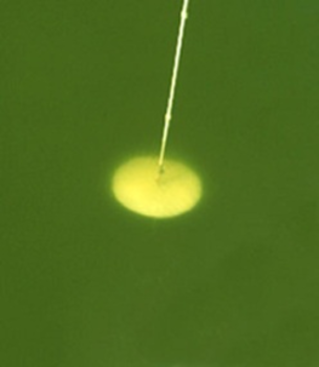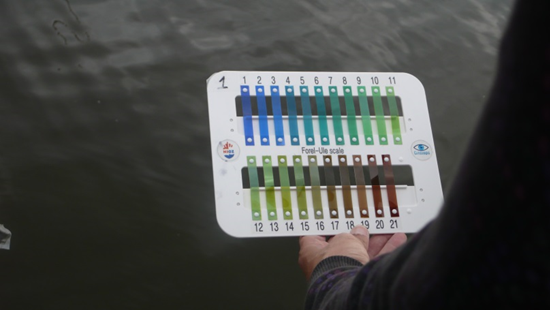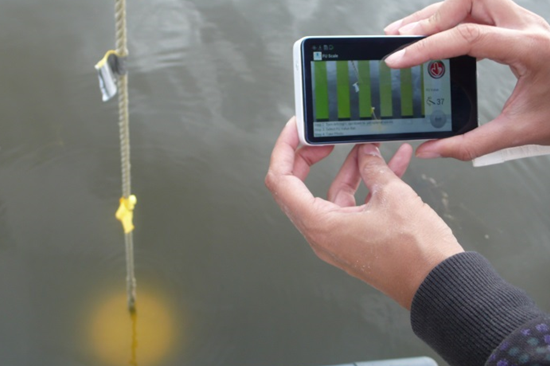Measuring water colour
Observations of the water colour date back all the way to the late 19th century, when the Forel-Ule colour comparator scale was created. This scale is composed of 21 colours, going from indigo blue to ‘cola’ brown, through blue-green, green, and yellow colours (see Figure 1). This system works well because the human eye can accurately match colours when viewed simultaneously.
The colour measurement with a Forel-Ule scale should be done with a secchi disc at the moment, but methods are being developed within the Citclops project to assess the water colour without the use of a disc.
The determination of the water colour using a Forel-Ule scale can be accomplished using either a FU scale made of plastic (Figure 1) or the Citclops app for smart phones (Figure 2), as follows:
With the plastic Forel-Ule scale:
- Slowly lower the disc into the water until it disappears from sight and note the depth. If possible this has to be done in the a shaded area.
- Slowly raise the disc until half the Secchi depth.
- Determine the colour of the water with the Forel Ule scale (in the shade).
- Compare the colour observed on top of the Secchi disc, with the colours of the scale (over the white bars (see red square) in the back (see Figure1).
- Record the FU number.
- Send recorded number, along with the location (GPS data if possible), date and time to: color@citclops.eu.


Figure 1. Left: Secchi disk. Right: The Forel-Ule scale. Look to the Secchi disk (at ½ SD depth) and compare colours.
With the App:
- Slowly lower the disc into the water until it disappears from sight and note the depth. If possible this has to be done in the a shaded area.
- Slowly raise the disc until half the Secchi depth (depth recorded in step 1).
- Determine the colour of the water with the smartphone APP (in the shade).
- Compare the colour observed on top of the Secchi disc, with the colours of the scale (over the white bars (see red square) in the back (see Figure1).
- Take a picture.
- Answer the questions asked.
- Click send.

Figure 2. The Forel-Ule smartphone App. Look to the Secchi disk (at ½ SD depth) and compare colours.
Some natural phenomena can change water colour but it does not necessarily mean that the water is of bad quality. The different colour numbers correspond mainly to these types of water bodies:
- Indigo blue to greenish blue with high light penetration (1-5 FU scale). These waters have often low nutrient levels and low production of biomass. The colour is dominated by microscopic algae (phytoplankton).
- Greenish blue to bluish green (6-9 FU scale). The colour is still dominated by algae, but also increased dissolved matter and some sediment may be present. Typical for areas towards the open sea.
- Greenish (10-13 FU scale). Often coastal waters which usually display increased nutrient and phytoplankton levels, but also contain minerals and dissolved organic material.
- Greenish brown to brownish green (14-17 FU scale). Usually with high nutrient and phytoplankton concentrations, but also increased sediment and dissolved organic matter. Typical for near-shore areas and tidal flats.
- Brownish green to cola brown (18-21 FU scale). Waters with an extremely high concentration of humic acids, which are typical for rivers and estuaries.
